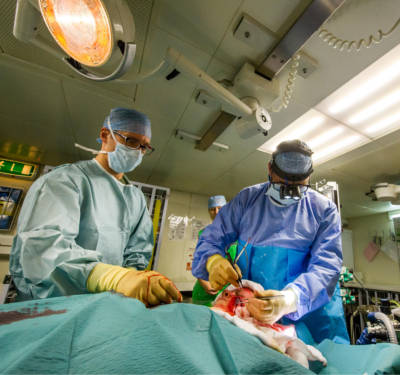The case for disaster medicine training
Only 15% of medical schools in Saudi Arabia provide students with disaster training.
Published online 31 October 2015

Disasters are on the rise around the world, but medical schools in Arab states are not keeping up.
© IAP / Alamy Stock Photo
Most medical schools in the Kingdom of Saudi Arabia are willing to include disaster training in their undergraduate training programmes, but fail to implement this because they do not have enough healthcare professionals with relevant expertise, according to new research published in the Journal of Emergency Medicine, Trauma and Acute Care1.
All modern healthcare systems need to be prepared to deal with events that cause mass casualties, such as catastrophic natural disasters, violent conflicts, terrorist attacks and outbreaks of infectious diseases. Such events have become more frequent in the Middle East due to spreading violence and evolving diseases.
Nidaa Bajow of the Prince Mohammed Bin Naif Medical Center in Riyadh and his colleagues contacted all 30 medical schools in Saudi Arabia and asked them to participate in the study by completing an online questionnaire containing 25 multiple choice and open-ended questions about demographic information and the inclusion and extent of disaster medicine education.
Of the 20 medical schools that responded, only three currently have disaster medicine programmes, and these devote an average of just three hours per year on the subject. Most of the respondents expressed a willingness to include disaster medicine training in their curricula, and indicated an interest in using simulation exercises to teach it.
The 17 schools that do not include disaster medicine training gave various reasons for not doing so, the most common being a lack of qualified expert educators, but this could be overcome by distance learning, which they also expressed an interest in.
This situation is not unique to Saudi Arabia, but is rather common worldwide, despite a significant increase in the incidence and severity of disasters in recent years.
Bajow says there are many obstacles to making disaster medicine training more widespread, both in Saudi Arabia and elsewhere. The main ones include a lack of interest, qualified teachers, funding resources and the low scientific impact it would have on medical research.
“This can be overcome by increasing awareness of the need for a professional response, and involving communities in the education process,” she says, adding that she and his colleagues are planning to follow up their study with an investigation of medical schools further afield.
Reference
Bajow, N, Djalali A, Ingrassia PL, Ageely H, Bani I, Corte FD. Disaster medicine curricula in Saudi Arabian medical schools. J. Emerg. Med. Trauma Acute Care 2015, 8 (2015). | article
DOI: 10.1038/qsh.2015.85

